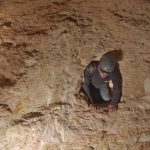Archaeologists: Mass Production of Arms in Israel Goes Back 7,200 Years
Jerusalem, 22 November, 2023 (TPS) -- War in the Middle East, it turns out, goes back more than seven millennia.
As far back as 7,200 years ago, there was a large-scale and systematic production of weapons in the area that is today’s Israel, the Antiquities Authority announced on Wednesday.
Findings reveal the earliest evidence of warfare in the Southern Levant, the state-run archaeological body said in a statement.
The research, recently published in the journal Atiqot, examined 424 slingstones from the Early Chalcolithic period (c. 5800–4500 BCE) that were uncovered at two large archaeological sites.
One site, En Esur is located in the northern Sharon Plain near the town of Pardes Hanna. The other site, En Zippori, is in the Lower Galilee.
The study revealed that the hundreds of slingstones, mostly manufactured from hard limestone, were almost identical, with an average length of 52 mm (just over 2 inches), a width of about 321 mm (a bit over 12.6 inches), and an average weight of 60 grams (around 2.1 ounces).
The stones, which were intended to be projected from a sling, are smoothed, with a specific aerodynamic form, enabling exact and effective projection.
Similar slingstones have been found at other sites in the country, mainly from the Hula Valley and the Galilee in the north to the northern Sharon Plain, but this is the first time that they have been discovered in excavations in such large concentrations.
The similarity of the slingstones—which are the earliest evidence of warfare in the Southern Levant—points to large-scale industrial production, the archaeologists said. The effort put into the aerodynamic form and the smoothing of the stones’ surface also indicates that they were intended to be exact and deadly weapons.
Both the large number of slingstones and the effort put into producing them point to organized preparation for battle that may have been a community effort to produce ammunition, the researchers conclude.
“Yet again, archaeology teaches us that history does repeat itself,” said Antiquities Authority director Eli Eskosido.







